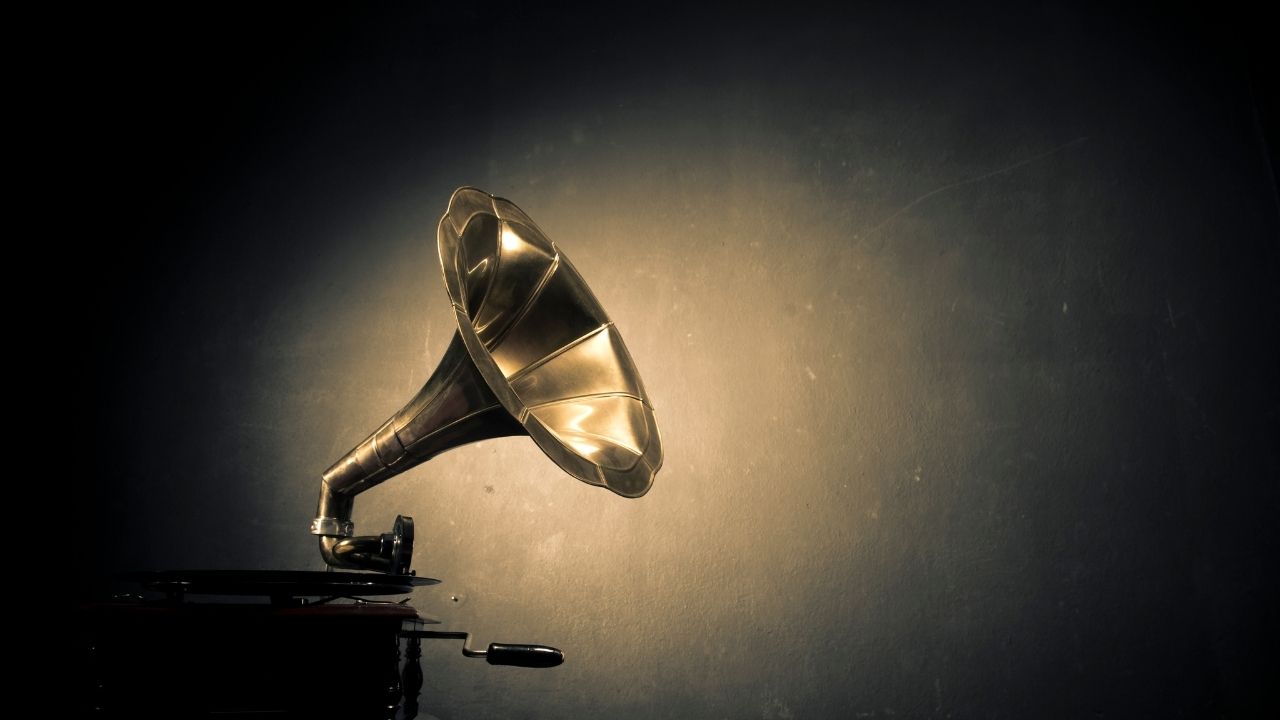What is Gramophone?
A gramophone is a type of recording device. Its design was first invented by Emile Berliner in 1887. Rather than using cylinders, Berliner used flat glass disks. The sound information was recorded and played back by a stylus using an arm to transmit vibrations to a horn that was attached to the player’s ear. It has become one of the most popular and widely used types of records.

The first gramophone was patented by Emile Berliner in 1887. Cros had created the device about a decade earlier. A diaphragm was linked to a recording stylus that traced a spiral onto a zinc disc. The disc was coated with beeswax, which was then immersed in chromic acid. The chromic acid etched a groove into the disc, which was then inserted into a record-player.
With more than 90 years of experience, Gramophone provides in-depth analysis of classical music. As a subscriber, you’ll get full access to every issue of the magazine, ensuring you have all the latest and most interesting content. Alternatively, you can opt for the digital edition, which will provide you with select pages from the most recent issue as soon as it is published. In addition, you’ll also be able to download the complete issues of the magazine.
The first version of a gramophone
The first version of a gramophone uses a tin disc as the recording medium. In the second edition, flat disks were used to play the recordings. The first two years brought the gramophone to life. The first versions of gramophones used tin discs and were made between five and 10 inches in diameter. In 1908, the invention of the flat disk made it possible to record on both sides of the disk, allowing for a higher resolution and more detailed recording. Today’s grammophones are powered by a spring-driven motor, allowing you to listen to the music on any device.
Basic Info about Gramophone
The original Gramophone was invented by Emile Berliner in 1887. It was a phonograph that was designed to record music. It had a diaphragm that was connected to a recording stylus, which traced a spiral pattern onto a zinc disc. A beeswax compound coated the zinc disc. This was then placed in a bath of chromic acid. The chromic acid etched a groove in the zinc disc.
The gramophone has been around since 1877. It is a traditional record player. It is made of a metal disc and a zinc disc. The diaphragm is connected to a recording stylus. This stylus then traces a spiral onto a zinc disc. This is coated with beeswax, which is then immersed in a bath of chromic acid. After a few minutes, the recording is preserved.
Interesting Facts About the Gramophone
If you’ve ever wondered about the gramophone, you’re not alone. The invention is one of the most fascinating and influential devices in history. In fact, this article has some of the most interesting facts about the earliest gramophones. Continue reading to learn more about this musical instrument. In the 19th century, a gramophone was the most common type of sound device. In the mid-19th century, however, the emergence of the lateral-cut disc record allowed anyone to make and sell them. From then on, the design of gramophones underwent massive change, including the adoption of several sizes and speeds of reproduction, as well as the use of vinyl.

Gramophone Discovery
The first gramophone was created by Emil Berliner in 1887. This invention was an improvement on Edison’s phonograph, and Berliner filed a patent for it in 1888. While Edison attempted to improve the cylinder-playback system, Berliner used flat glass discs. To make the discs more convenient to hold, he placed a stylus on top of each one, which played back sound information with an arm. The stylus then transmitted the vibrations to a horn, which was then passed to the listener.
The first gramophones used
The first gramophones used a needle to reproduce music. The first paratyphones had a spring mechanism that was started by a handle like a clockspring. The spring would play the same side of a disk for three to four minutes. As the first gramophones began to become more advanced, the process was more complicated. During the 19th century, Berliner’s company was formed, and his goal was to make the infamous gramophone.
Berliner’s first attempt at the gramophone sounded so good that Berliner began work on improving it. He looked for a replacement for the zinc disc and tried several materials. In the 1890s, he settled on steel, celluloid, and rubber. The resulting product was much more efficient and durable. With these improvements, the gramophone soon became a popular choice for music lovers. The evolution of the gramophone has been an incredible story.
How gramophone’s develop
The gramophone’s development was not an easy process. In fact, the first attempts at recording music were not the easiest. It took many years for Edison to create the first gramophone, which is also the name of the original phonograph. Then, in the early twentieth century, the gramophone became a popular invention, and the gramophone stayed in use for more than a century.
Who is gramophone inventor
The gramophone is the first sound-reproducing device that reproduces sound. It was invented by James Jolly in London, and was popularized by the Gramophone Company in the United States in 1910. In its early days, listeners would have to manually crank the device to hear the music. Moreover, the speed of the earphone was inconsistent, depending on the tension of the horn. That made it extremely difficult to use in public places.
The gramophone was a revolutionary invention. While Edison and Cro had both invented the phonograph, the gramophone is an independent invention. It was first patented by Emil Berliner in 1877 and was the first music recording machine. Originally, the gramophone had a single cylinder, but later, the cutter used to write the sound on the gramophone was much larger. This led to the first lateral cut gramophone. The earliest models used a circular cylinder, which was not reproducible.
How Does work gramophone
The gramophone had an etched center area. Afterwards, it could produce sound by removing the need for flipping the disc. With this invention, the gramophone has a central blank area that can be etched with a title, performer, and disc number. This was a great advance for home recordings. So, if you are a fan of music, it is likely that the era of the phonograph was a time of a great innovation.
The gramophone was the “father” of the modern player. In fact, it was the first player to play single-disc recordings. The gramophone was the precursor of the modern-day CD-player. Its technology was inspired by the phonograph. It had a similar shape and design to the phonograph of today. This shaped the disc that was played the music. It was the “father” of the record, and the phonograph was the first true record.
 Skip to content
Skip to content










